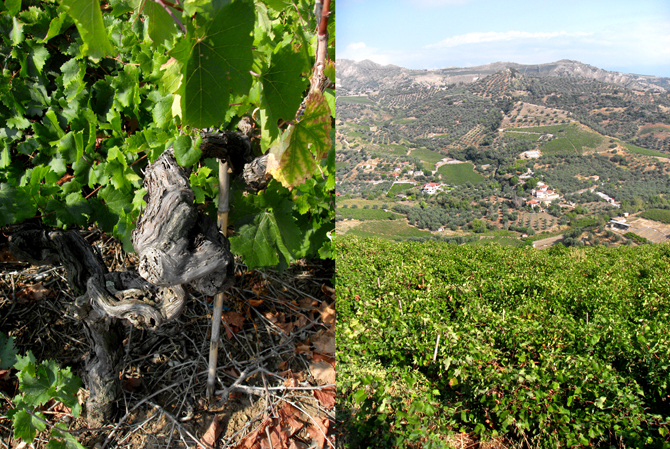The life of a currant
I bought a pack of Garibaldi biscuits the other day, put it down to nostalgia if you want, but I like the buggers. I sat with a cup of Clipper Organic Earl Gray, munching on these jewel studded cardboard treasures, wondering if life could get any better. Casting my eye toward the packet – ignoring the self-righteous ‘each biscuit contains’ stats, I read that the largest ingredient, at a sizeable 39%, is the humble currant.
This dried vine fruit is a great example of an ingredient that you think nothing of, but like every single thing that makes up our food, it has a journey.
So here’s that journey. I challenge you to tuck into an Eccles cake or a Garibaldi and not be slightly impressed at the effort involved in bringing you that well deserved treat.

Where it all starts, with black Corinth grapes.

The vines and the steep terrain they sit on.
They start as black Corinth grapes, grown on steep hillsides in Greece. The vines aren’t wired, as in wine viticulture, but left to grow in a more bushy, natural state and because of this they have to be harvested by hand.

After 10-12 days of Greek sun they look like this.
When ripe, they are laid on plastic sheeting, under the sun for 10-12 days, until they are 30% of it’s original weight.

Graded, washed, graded, sorted and laser screened - I kid you not!
They are graded by the farmer, to remove the smaller ones and detritus such as stalks. Then the fun starts – at the packing plant they are graded once more for size, then run under magnets to remove any metallic contaminents. After another grading they are washed, removing in the process any heavy stuff, such as stones. Passing through numerous vortices does for anything in the product that is too light, such as stalks.
After all this, comes the really impressive sorting device – a laser screening that gets rid of, not only the stalks, but any currants that are the wrong colour – indicating they may not be of the standard required.

sorted (again), weighed, packed and x-rayed.
After they are subjected to technology they are given one last look over by some Greek women, who pick out any damaged product and send the lucky little grapes on their way to be weighed, packed, x-rayed and shipped out.
All that so small children can pick them out of things and complain they look like squashed flies.
And for those who are really boring – like me, here’s the difference between dried vine fruits, for you to trot out whenever the conversation is in need of a food fact.
Currants are black Corinth grapes which have been dried in the sun for 10-12 days.
Raisins are green Thompson grapes which have been dried in the sun for 3 weeks.
Sultanas are green Thompson grapes, treated with an alkali solution to crack the skins and dried in the sun for 10 days.